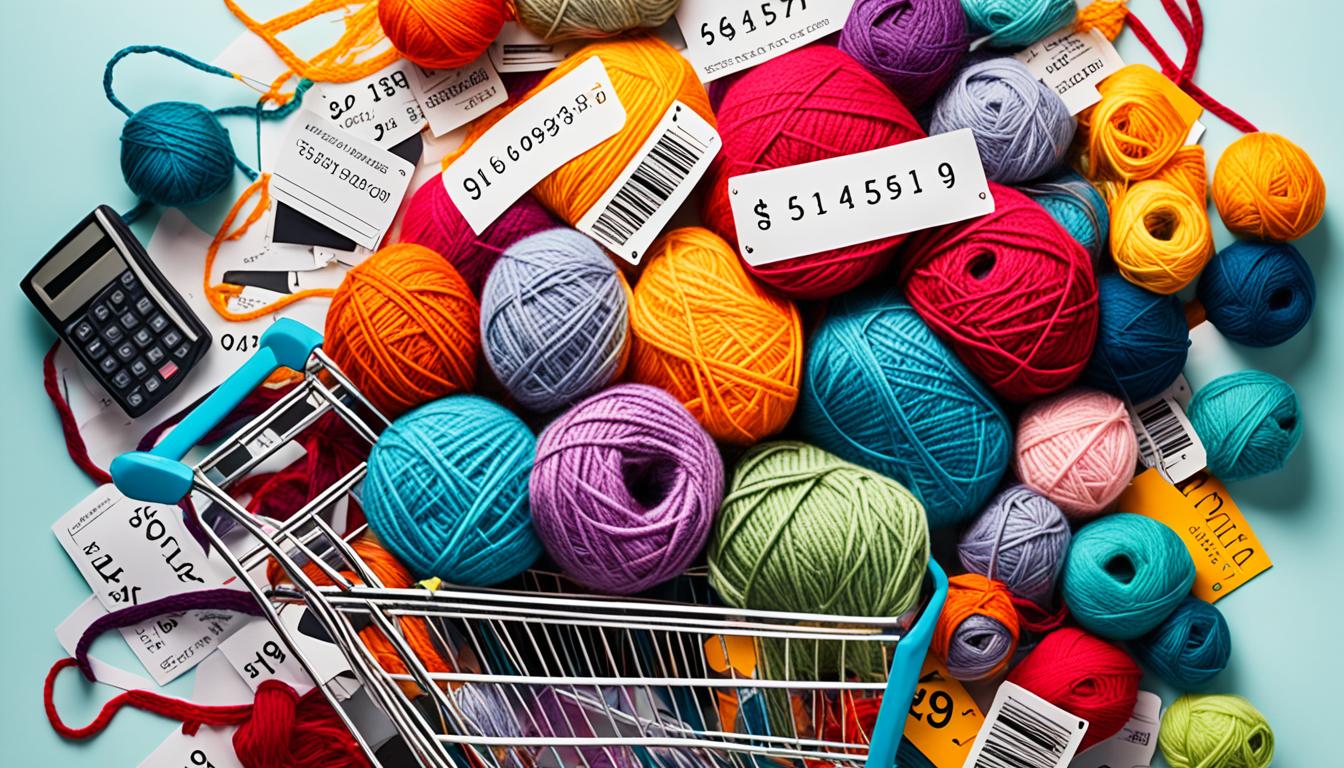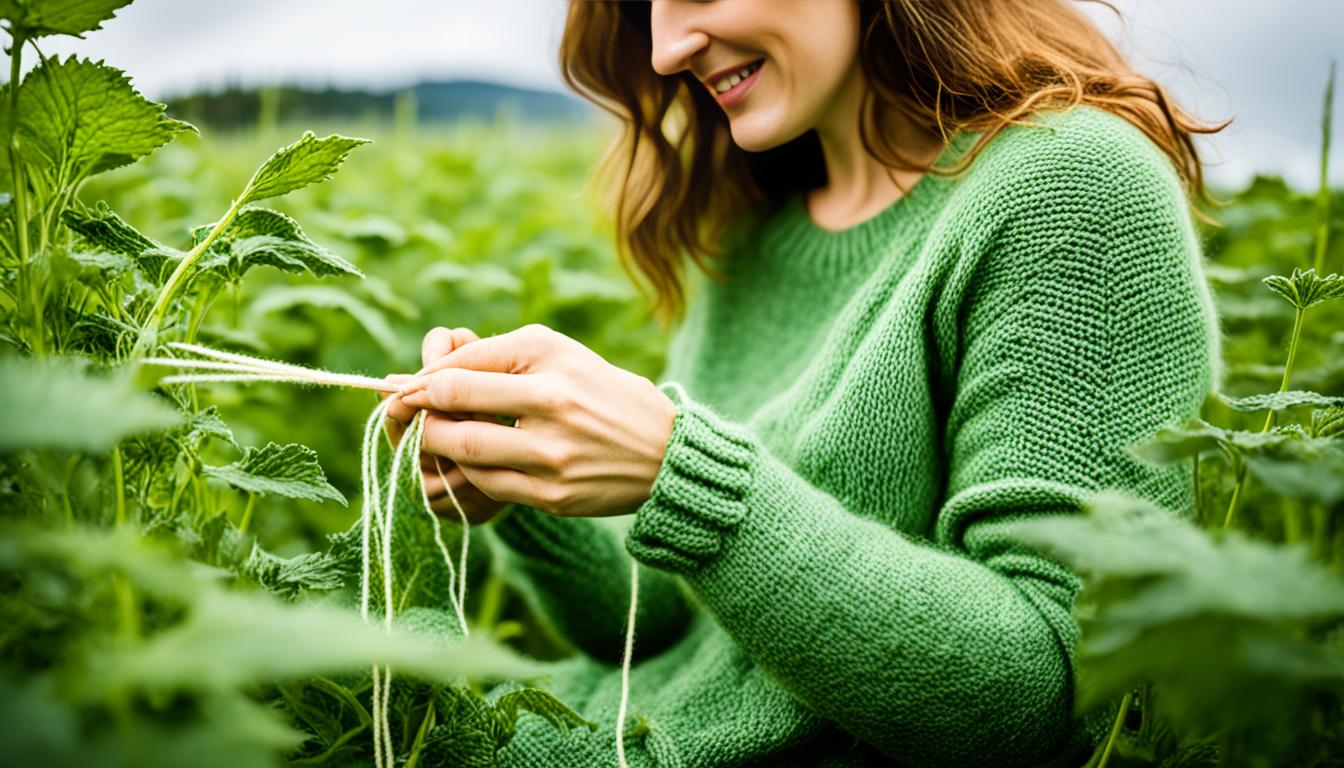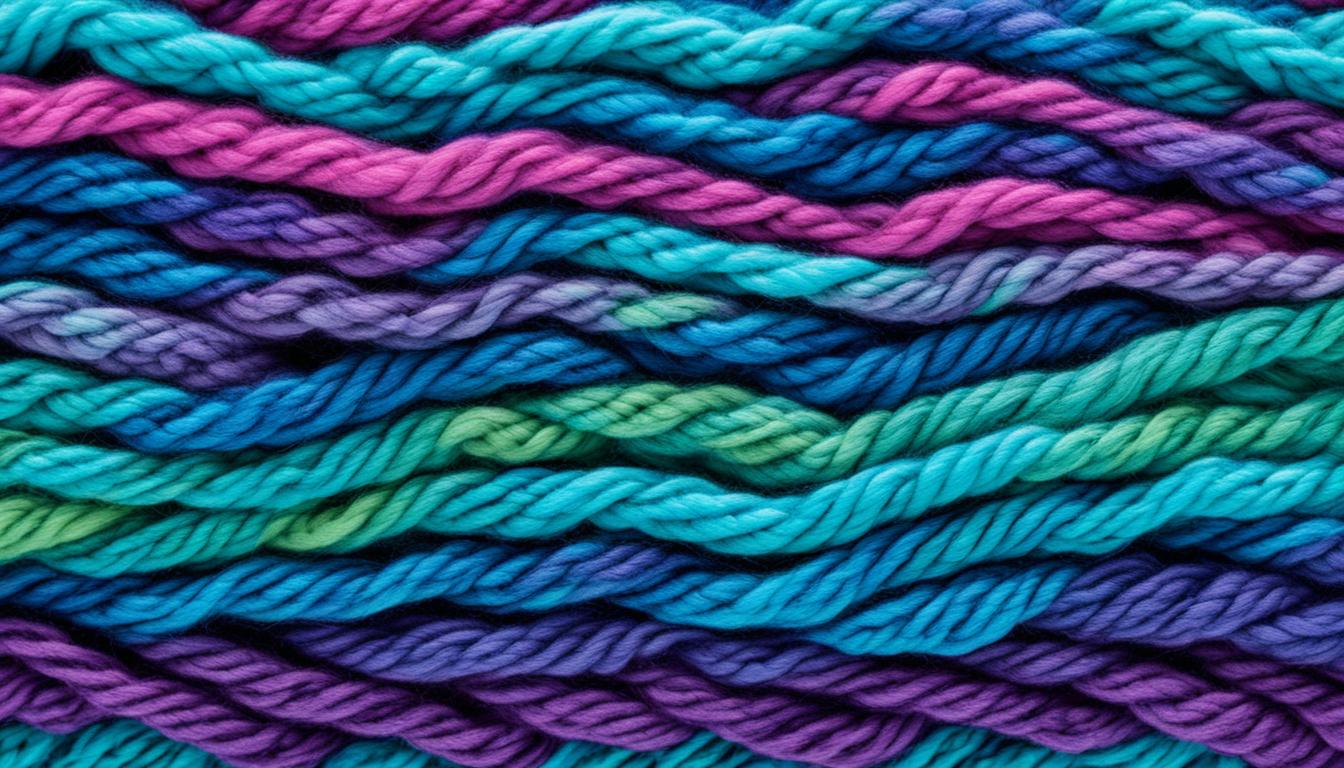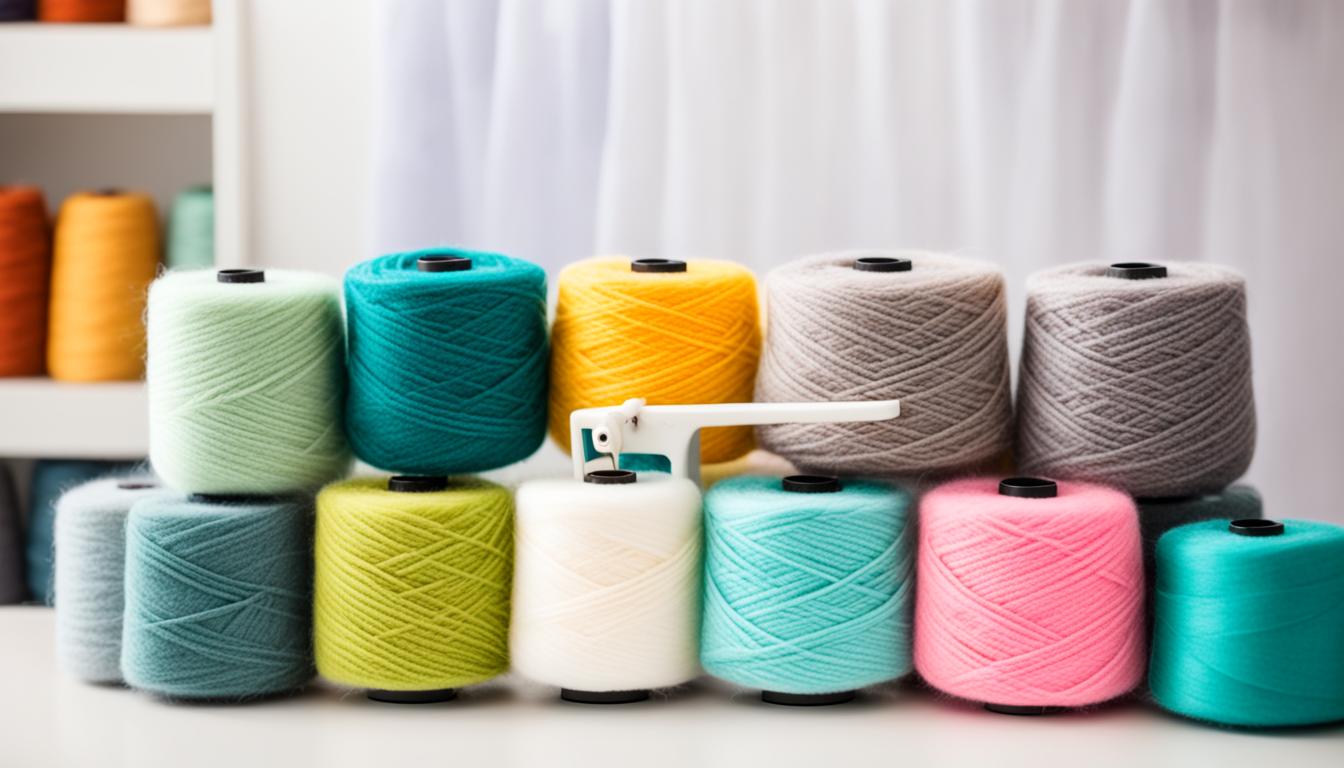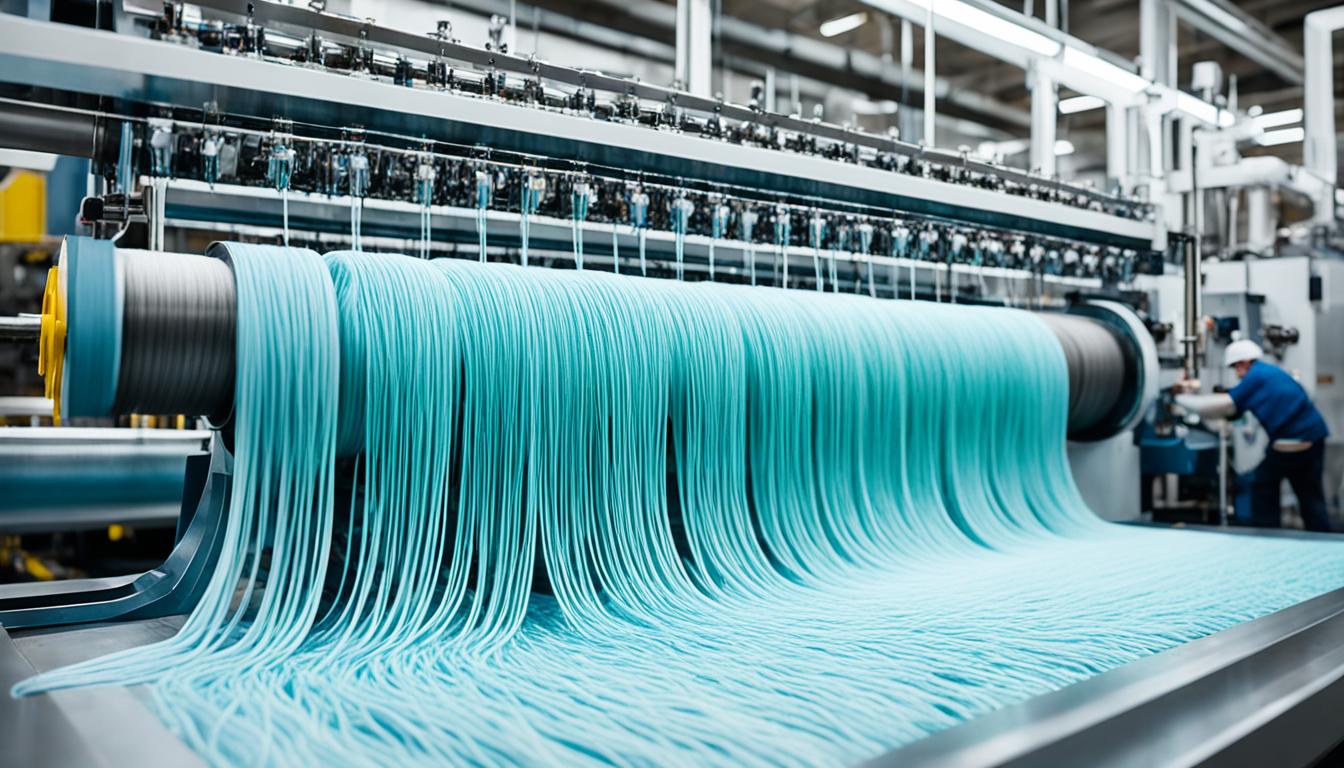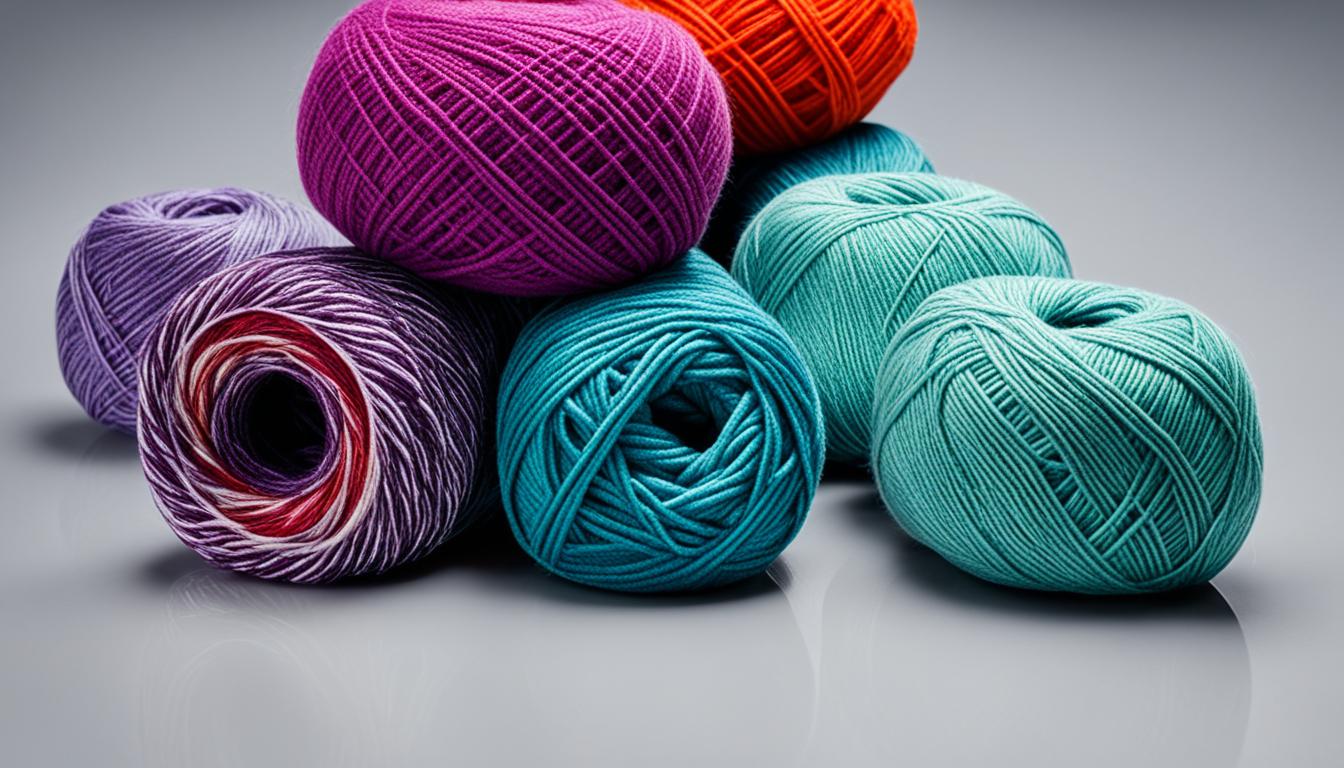Have you ever pondered why certain yarn is pricier than others? Is it solely based on brand recognition or is there a deeper reason behind it? In this informative guide, we will delve into the aspects that influence yarn cost and assist you in making well-informed choices when purchasing yarn for your projects. Prepare to uncover the secrets of yarn pricing!
Key Takeaways:
- Yarn cost depends on various factors, including yarn count, fiber type, and production processes.
- Comparing yarn prices and exploring affordable options can help you find cost-effective solutions without compromising on quality.
- Estimating yarn cost involves considering factors such as project size and complexity.
- Understanding the relationship between yarn count and fabric characteristics is essential for selecting the right yarn for your projects.
- By balancing yarn cost and quality, you can create beautiful, cost-effective creations.
The Importance of Yarn Count in Textiles
Yarn count is a fundamental concept in the textile industry, playing a crucial role in determining the characteristics of the final fabric. Understanding yarn count is essential for both manufacturers and crafters alike.
Defining Yarn Count
Yarn count refers to the fineness or thickness of a yarn and is measured by expressing the mass of the yarn per unit length. It is a numerical representation of the yarn’s thickness and density. The yarn count directly influences the weight, texture, and appearance of the fabric.
Fabric Characteristics
The choice of yarn count has a significant impact on the fabric’s characteristics. Different yarn counts result in varying fabric weights, drape, and texture. Finer yarns create lighter and more delicate fabrics, while thicker yarns contribute to heavier and more robust textiles. By carefully selecting the appropriate yarn count, you can achieve the desired aesthetic appeal and functional properties for your projects.
The Role of Yarn Count in the Textile Industry
Yarn count is of utmost importance in the textile industry. It helps manufacturers produce fabrics with specific characteristics, ensuring consistency and quality. Additionally, different industries have varying requirements for yarn count, depending on the end-use application. For instance, lightweight clothing may require finer yarns, while heavy-duty fabrics like carpets may need coarser yarns for durability.
Understanding the Relationship
Yarn count is not determined solely by thickness; it also considers the density and twist of the yarn. The relationship between yarn count and fabric characteristics is complex and requires careful consideration. Crafters and manufacturers must understand the impact of yarn count on the final product to achieve their desired outcomes.
In the next section, we will explore different systems for measuring yarn count and how they contribute to the overall understanding and application of yarn count in the textile industry.
Stay tuned for our comprehensive guide to yarn count measurement methods and their implications.
Different Systems for Measuring Yarn Count
When it comes to measuring yarn count, there are different systems in place. These systems enable us to accurately determine the fineness or thickness of yarn, allowing for better comparisons and selection of the right yarn count for our projects.
The direct system includes three popular units of measurement: tex, decitex, and denier. These units measure the mass of a yarn over a specific length. The tex unit signifies the number of grams per 1000 meters of yarn, while the decitex unit represents the mass in grams per 10,000 meters. On the other hand, the denier unit measures the weight in grams of 9,000 meters of yarn. Understanding these measurements can help us determine the thickness and weight of the yarn more accurately.
In addition to the direct system, there is also an indirect system used for measuring yarn count. This system includes two commonly used units: Ne (English Cotton Count) and Nm (Metric Count). These units represent the number of hanks or kilometers of yarn per pound or kilogram. Ne measures the number of 840-yard skeins required to weigh one pound, whereas Nm represents the number of kilometers of yarn per kilogram. These measurements provide a different perspective on yarn count and can be useful when comparing yarns with different thicknesses and lengths.
Understanding the different systems for measuring yarn count allows us to make informed decisions when selecting the appropriate yarn for our projects. Whether we prefer the direct or indirect system, being familiar with these measurements can greatly assist us in achieving the desired outcomes. So, let’s dive deeper into the fascinating world of yarn count and explore how it influences our fabric creations.
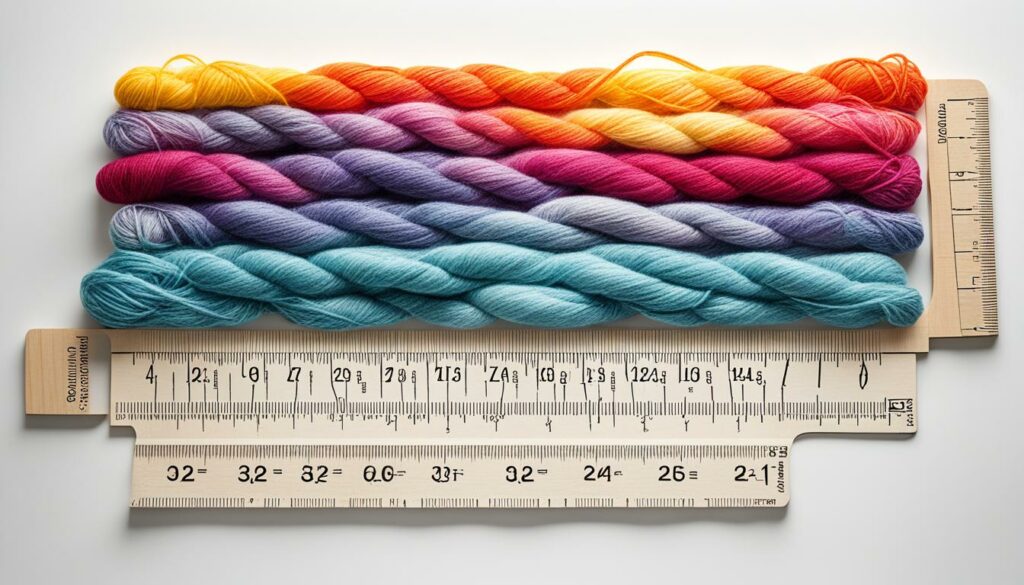
| Measurement System | Unit | Length Considered | Example Conversion |
|---|---|---|---|
| Direct System | tex | grams/1000m | 1 tex = 1 g/1000m |
| decitex | grams/10,000m | 1 decitex = 0.1 tex | |
| denier | grams/9000m | 1 denier = 0.111 decitex | |
| Indirect System | Ne (English Cotton Count) | number of 840-yard skeins per pound | Higher Ne = Finer Yarn |
| Nm (Metric Count) | number of kilometers per kilogram | Higher Nm = Finer Yarn |
Factors Influencing Yarn Count Selection
When it comes to selecting the right yarn count, several factors come into play. These factors include the type of fiber used, the end-use requirements of the fabric, the fabric structure, and aesthetic preferences. Let’s explore how each of these factors influences yarn count selection.
Fiber Type
The type of fiber used is a crucial factor in determining the appropriate yarn count for a fabric. Different fibers have varying optimal yarn counts. For example, fine and delicate fibers like cashmere or silk may require a finer yarn count to achieve the desired softness and drape. Coarser fibers, such as wool or cotton, may require a slightly thicker yarn count for added durability and structure.
End-use Requirements
The intended use of the fabric is another influential factor in yarn count selection. Fabrics for lightweight clothing, such as summer dresses or delicate lingerie, often require finer yarn counts to achieve a lightweight and breathable texture. In contrast, heavy-duty fabrics like carpets or upholstery may benefit from coarser yarn counts known for their strength and durability.
Fabric Structure
The fabric structure also plays a role in determining the suitable yarn count. Different fabric structures, such as plain weave, twill, or satin weave, may require specific yarn counts to achieve the desired properties. For instance, a plain weave fabric may require a finer yarn count for a smooth and refined appearance, while a twill fabric may benefit from a slightly thicker yarn count to enhance its characteristic diagonal pattern.
Aesthetic Preferences
Aesthetic preferences are an essential consideration in yarn count selection. Designers often choose yarn counts based on visual and tactile effects they want to create in the final product. Fine yarn counts tend to create a smoother and more refined appearance, while thicker yarn counts can result in a textured or rustic look. By understanding the desired aesthetic outcome, designers can select the appropriate yarn count to bring their creative vision to life.
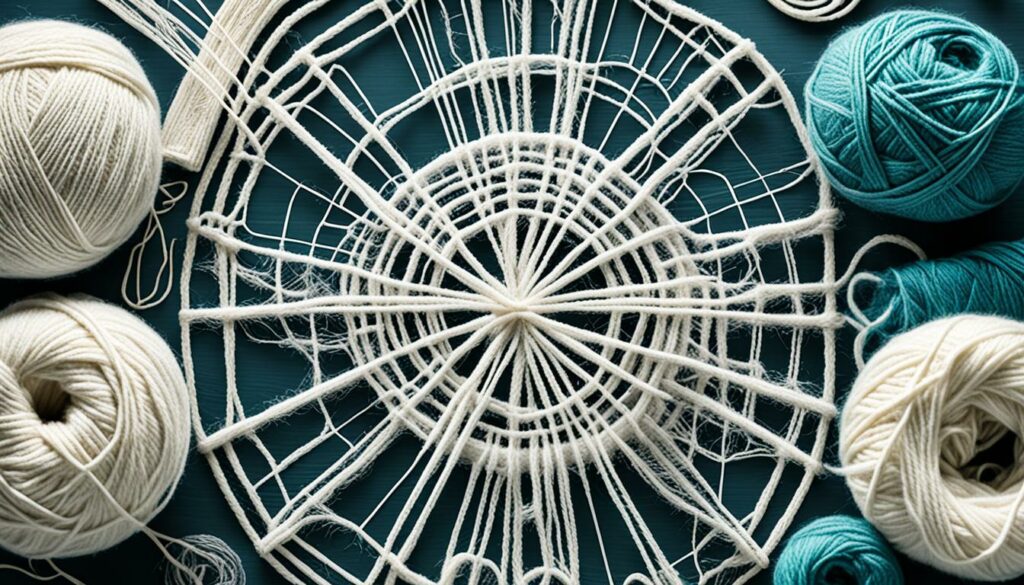
Considering these factors is crucial for making informed decisions when selecting yarn count. By understanding the impact of fiber type, end-use requirements, fabric structure, and aesthetic preferences, we can choose the right yarn count to achieve the desired characteristics and visual appeal in our fabric projects.
The Significance of Yarn Count in Fabric Characteristics
In the world of textiles, the yarn count plays a vital role in determining the characteristics of the fabric. The weight, texture, and drape of the fabric are all influenced by the yarn count.
When it comes to yarn count, finer yarns result in lighter and more delicate fabrics. They create a sense of airiness and have a smoother drape. On the other hand, thicker yarns contribute to heavier and more robust textiles that have a substantial weight to them. These fabrics are often used for more durable applications that require strength and sturdiness.
Texture also plays a significant role in fabric characteristics. Finer yarns tend to create fabrics with a smooth and refined texture, while thicker yarns contribute to a more textured or rustic appearance. The choice of yarn count can influence the tactile experience and the visual appeal of the fabric.
Understanding the relationship between yarn count and fabric characteristics allows us to make informed decisions when selecting yarn for our projects. By considering the desired weight, texture, and drape, we can choose the right yarn count to achieve the desired outcome.
To illustrate the impact of yarn count on fabric characteristics, let’s take a look at the following table:
| Yarn Count | Weight of Fabric | Texture of Fabric | Drape of Fabric |
|---|---|---|---|
| Lower (finer yarns) | Lighter | Smooth and refined | Soft and flowing |
| Higher (thicker yarns) | Heavier | Textured or rustic | Stiff and structured |
This table provides a visual representation of how yarn count affects fabric characteristics. By understanding the relationship between these factors, we can select the most appropriate yarn count for our specific projects, whether we’re creating lightweight garments or sturdy upholstery fabrics.
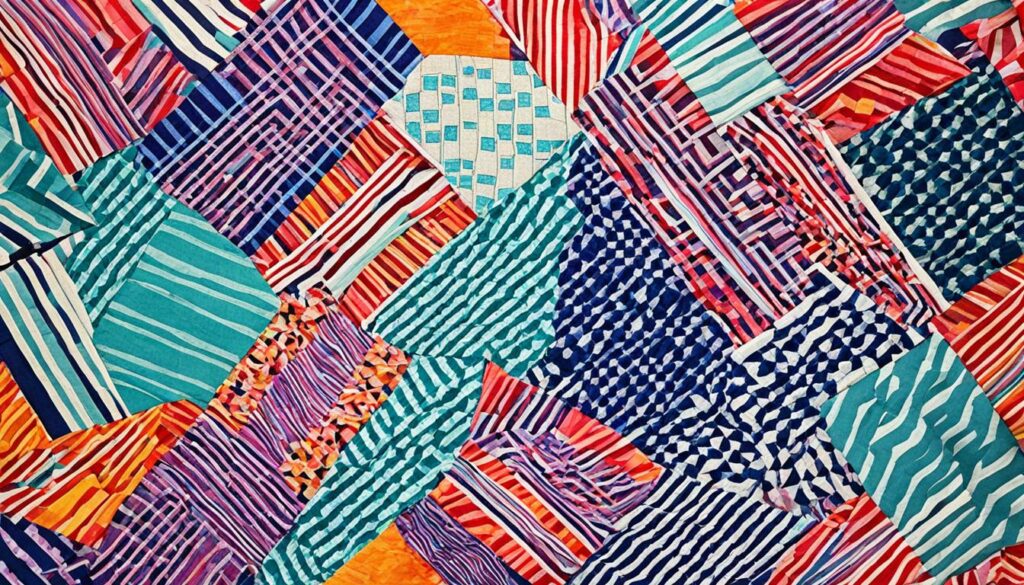
As we can see, yarn count plays a pivotal role in determining the weight, texture, and drape of the fabric. By considering these characteristics, we can create fabrics that align with our desired aesthetic and functional requirements.
The Impact of Yarn Count on End-Use Applications
When it comes to selecting the right yarn for a particular project, considering the end-use applications is crucial. Different end-use applications require specific yarn counts to achieve the desired performance and aesthetic properties.
For lightweight clothing and delicate textiles, fine yarns are often the preferred choice. These yarns, with their specific yarn counts, create fabrics that are comfortable, breathable, and have a delicate drape. They are perfect for creating lightweight garments such as summer dresses, scarves, and baby clothing. The specific yarn counts used for these applications ensure that the fabrics exhibit the desired weight, drape, and overall aesthetic appeal.
On the other hand, when it comes to heavy-duty fabrics like carpets and upholstery, coarser yarns with different yarn counts are more suitable. These yarns create fabrics that are durable, robust, and can withstand heavy use. Carpets made from coarser yarns provide excellent resistance to wear and tear, while upholstery fabrics made from these yarns offer increased durability and stability. The specific yarn counts chosen for these applications are designed to meet the demands of heavy use and ensure the longevity of the fabrics.
By understanding the impact of yarn count on end-use applications, we can make informed decisions when selecting yarn for different projects. Whether it’s lightweight clothing or heavy-duty fabrics, choosing the right yarn count plays a vital role in achieving the desired performance and aesthetic properties.

Examples of End-Use Applications
Here are a few examples of end-use applications and the specific yarn counts that are commonly used:
- Lightweight clothing: Yarn counts ranging from 20s to 60s are commonly used to create fabrics for lightweight clothing like t-shirts, blouses, and dresses.
- Delicate textiles: For delicate textiles such as lace or fine linens, even finer yarn counts in the range of 80s to 120s are used to achieve intricate designs and delicate textures.
- Heavy-duty fabrics: For heavy-duty applications like carpets and upholstery, coarser yarn counts such as 8s to 16s are preferred to ensure durability and resistance to wear and tear.
By considering the specific end-use applications and the yarn counts associated with them, we can create fabrics that meet the performance requirements and aesthetic preferences of each project.
How Yarn Count Affects Fabric Aesthetic
When it comes to creating visually appealing fabrics, yarn count plays a crucial role. The choice of yarn count directly impacts the overall appearance of the fabric, whether you’re aiming for a smooth and refined surface or a textured and rustic look.
Finer yarns, with a higher yarn count, create a luxurious and elegant appeal. They result in a fabric with a smoother surface, giving it a refined and sophisticated appearance. These finer yarns are often used in high-end garments and delicate textiles, where the visual appeal is of utmost importance.
On the other hand, thicker yarns with a lower yarn count contribute to a more textured fabric. These yarns create a distinct and rustic look, adding depth and character to the fabric. Textured fabrics often have a more casual or cozy vibe, making them suitable for a wide range of applications, from home decor to outerwear.
Exploring the Impact of Yarn Count on Fabric Appearance
The visual effects achieved through yarn count are particularly evident in weaving and knitting projects. By selecting yarns with different counts, we can create fabrics with varying levels of visual interest and depth. For example, a fabric with a higher yarn count will have a more even and tightly woven appearance, while a fabric with a lower yarn count will have a more open and loosely knit structure, resulting in a more textural and eye-catching fabric.
Whether you’re aiming for a refined and elegant look or a textured and rustic aesthetic, the choice of yarn count is key. It’s like selecting the brush strokes for your masterpiece, allowing you to create fabrics that truly reflect your vision and design concept.
When working on textile projects, paying attention to yarn count can make a significant difference in achieving the desired visual effects. Experimenting with different yarn counts and exploring their impact on fabric appearance can lead to beautiful and unique creations. With the right yarn count, you can bring your creative vision to life and create fabrics that truly stand out.
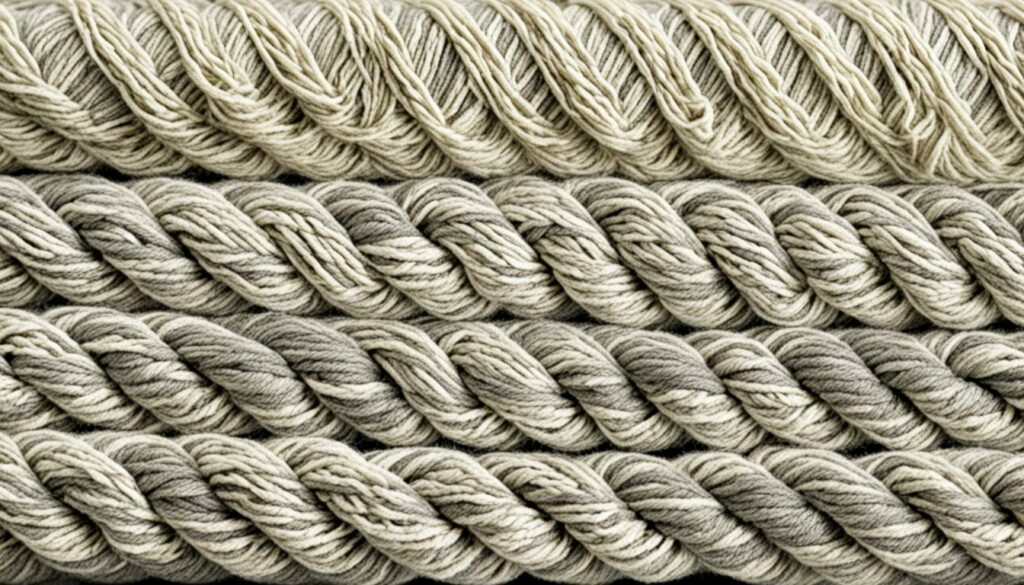
Enhancing Fabric Aesthetic with Yarn Count Selection
By carefully considering yarn count in your projects, you can align the fabric’s aesthetic appeal with your desired design concept. For a garment with a sleek and refined look, opt for finer yarns with a higher yarn count. These yarns will create a smooth and elegant fabric that drapes beautifully on the body.
On the other hand, if you’re aiming for a more textured and rustic appearance, choose thicker yarns with a lower yarn count. These yarns will add depth and visual interest to your fabric, giving it a distinct and unique character.
Keep in mind that yarn count is just one factor in achieving the desired fabric aesthetic. Other elements, such as color selection, pattern design, and fabric composition, also contribute to the overall visual appeal. By considering the interplay between these factors, you can create fabrics that captivate the eye and bring your creative vision to life.
| Yarn Count | Fabric Appearance |
|---|---|
| Higher Yarn Count (Finer Yarns) | Smooth and refined surface |
| Lower Yarn Count (Thicker Yarns) | Textured and rustic look |
Understanding Yarn Cost and Production Factors
When considering the cost of yarn, it’s important to understand how different factors can affect the overall production cost. One significant factor is the yarn count, which directly influences the cost of production.
Finer yarns often require more intricate spinning processes, resulting in higher production costs. These processes involve spinning the fibers into a finer yarn, which requires additional steps and precision.
In contrast, coarser yarns are generally more economical to produce. The spinning processes for coarser yarns are typically less complex and time-consuming, resulting in lower production costs.
By understanding the relationship between yarn count and production cost, crafters and manufacturers can estimate the cost of the yarn and make informed choices when buying yarn for their projects. It’s important to consider both the desired yarn count and the associated production costs to achieve the right balance between quality and affordability.
| Yarn | Yarn Count | Spinning Process | Production Cost |
|---|---|---|---|
| Finer Yarn | Higher | Intricate | Higher |
| Coarser Yarn | Lower | Simpler | Lower |
As the table illustrates, the yarn count and spinning process directly impact the production cost. Crafters and manufacturers can use this knowledge to estimate yarn costs and select the most suitable yarn for their budget and project requirements.
Estimating Yarn Cost Examples:
- Finer yarns: A project that requires a fine yarn count may result in higher production costs due to the intricate spinning processes involved. However, the desired fabric characteristics and aesthetic appeal may outweigh the higher yarn cost.
- Coarser yarns: Opting for a coarser yarn count can be a cost-effective choice for projects with larger yarn requirements. The simplified spinning processes can help reduce production costs without compromising the quality of the final product.
It’s essential to consider the desired yarn count, project requirements, and budget when estimating the yarn cost. By balancing these factors, crafters can make informed decisions and create beautiful, cost-effective creations.
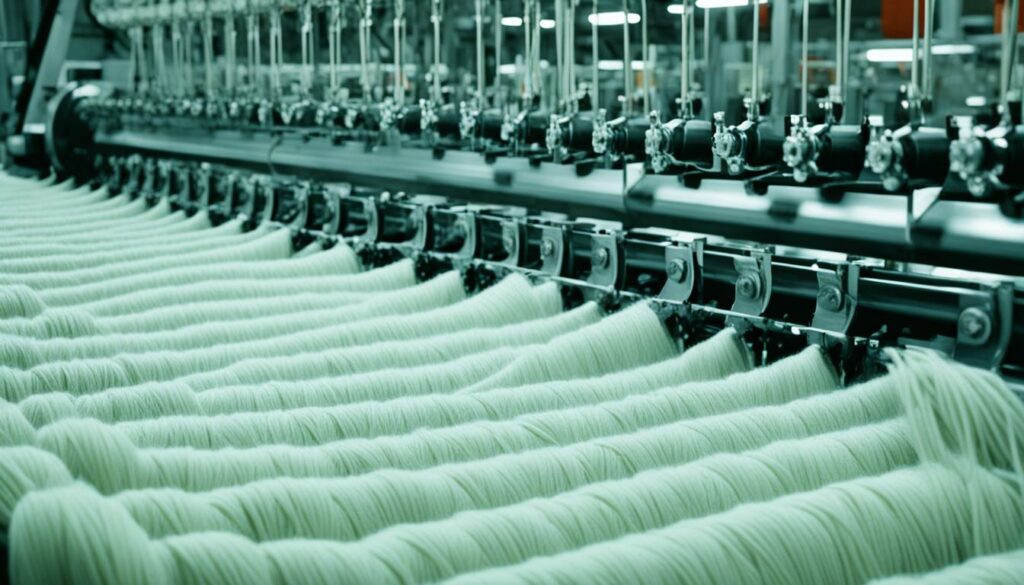
Factors to Consider in Estimating Yarn Cost
Estimating yarn cost requires careful consideration of several factors to ensure accurate planning of crafting expenses. The type of fiber, yarn count, project size, and project complexity all play significant roles in determining the overall yarn cost.
First, the choice of fiber type has a direct impact on the price of yarn. Different fibers come with varying price ranges due to factors such as availability, production processes, and demand. It is essential to research and compare the cost of different fiber types to find the most suitable option for your project within your budget.
Next, yarn count is an important factor to account for when estimating yarn cost. Yarn count refers to the thickness or fineness of the yarn and is measured in terms of mass per unit length. Yarns with higher counts tend to be more expensive. By understanding the relationship between yarn count and cost, you can make informed decisions based on your project requirements and budget.
The size of your project also influences yarn cost. Larger projects require more yarn, resulting in higher expenses. Consider the dimensions of your project and calculate the estimated quantity of yarn needed. This calculation, combined with the cost per skein or yardage, will help you estimate the total yarn cost accurately.
Similarly, project complexity affects the amount of yarn required. Intricate designs, textured patterns, and detailed motifs may require additional yarn compared to simpler projects. Take into account the level of complexity and factor it into your estimation to avoid underestimating the yarn cost.
Here is an example table summarizing the factors to consider when estimating yarn cost:
| Factors | Impact on Yarn Cost |
|---|---|
| Fiber Type | Varies based on fiber availability, production processes, and demand |
| Yarn Count | Higher counts generally result in higher prices |
| Project Size | Larger projects require more yarn, leading to increased expenses |
| Project Complexity | Intricate designs and patterns may require more yarn |
By carefully considering these factors, you can estimate the yarn cost more accurately, allowing you to plan your crafting expenses and ensure a smooth project execution.
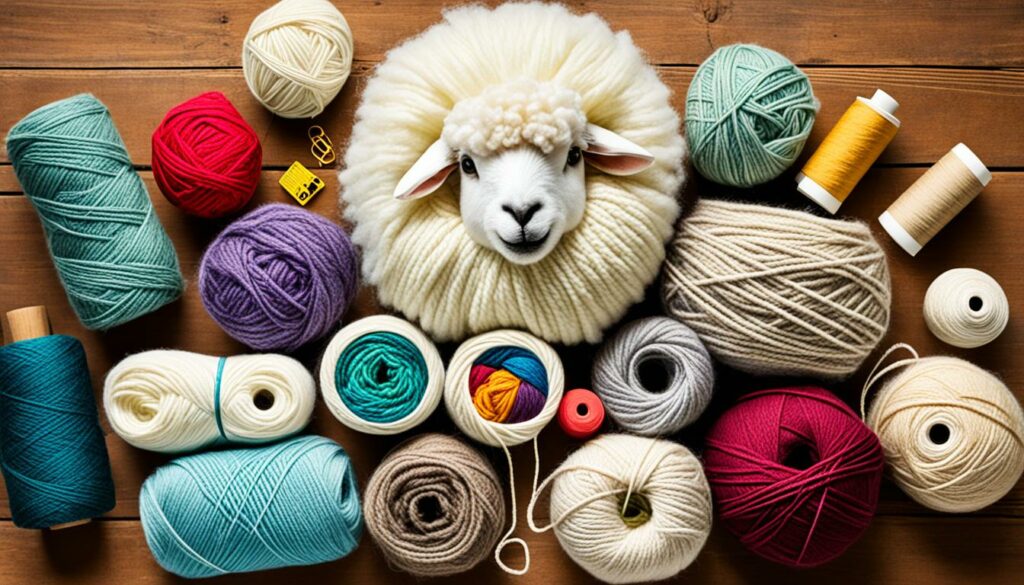
Whether you’re working on a small project or a larger endeavor, understanding the factors that contribute to the yarn cost is essential. By factoring in the fiber type, yarn count, project size, and complexity, you can make informed decisions and estimate the cost accurately. This knowledge empowers you to embark on your crafting projects with confidence, creating beautiful and budget-friendly creations.
Balancing Yarn Cost and Quality
When it comes to purchasing yarn, cost is an important factor to consider. However, it’s equally important to balance the cost with the quality of the yarn. While expensive yarns may offer luxurious fibers or unique characteristics, there are also affordable options available that can deliver satisfactory results.
Finding a balance between yarn cost and quality is essential to ensure value for money and achieve the desired outcome in your projects. As crafters, we want to create beautiful and cost-effective creations without compromising on the quality of materials.
One way to find affordable yarn options is to explore different brands and suppliers. Many reputable and well-known companies offer cost-effective yarn without compromising on quality. These brands understand the importance of providing affordable options and ensure that their yarns meet the standards of quality materials.
“Affordable yarn options are readily available from a variety of trusted brands. Don’t assume that cost determines quality – you can find high-quality materials at a lower price point!”
It’s also essential to consider the specific needs of your project when balancing yarn cost and quality. Not every project requires the most expensive yarn available. Understanding the required characteristics and properties of the yarn for your project will help you make an informed decision.
When exploring different yarn options, pay attention to the fiber content, yarn weight, and recommended gauge. These factors play a significant role in the overall quality of the yarn and its suitability for your projects.
Remember, affordable yarn options don’t always mean compromising on the quality of materials. By finding the right balance, you can create beautiful and cost-effective projects without breaking the bank.
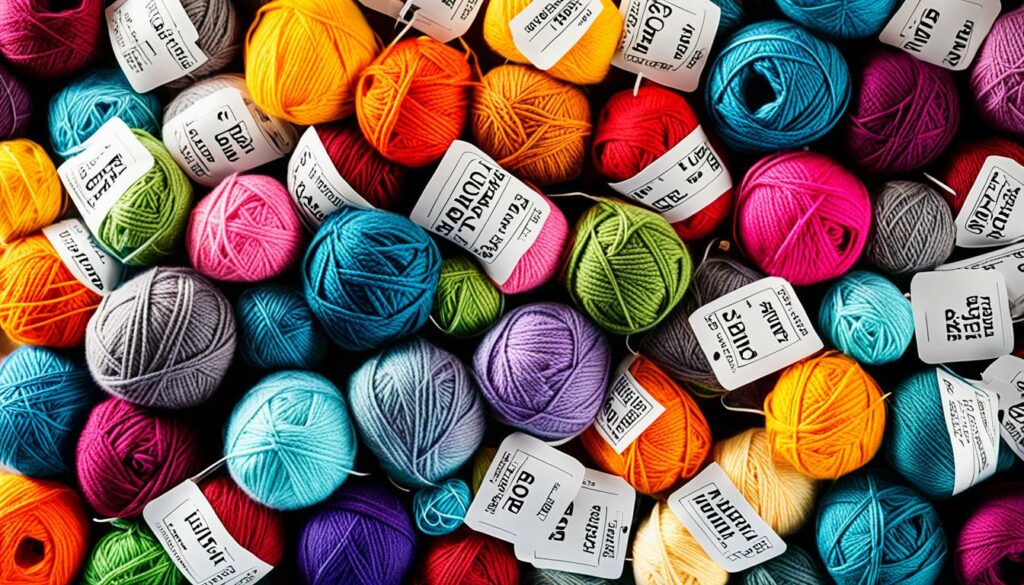
| Pros of Affordable Yarn Options: | Cons of Affordable Yarn Options: |
|---|---|
|
|
Expert Tip: Consider Clearance Sales and Discounts
When on a budget, keep an eye out for clearance sales and discounts. Many yarn retailers offer seasonal promotions or special deals on specific yarns. These sales can be an excellent opportunity to stock up on high-quality yarn at a lower cost. Sign up for newsletters or follow your favorite yarn brands on social media to stay updated on any sales or promotions.
By considering both the cost and quality of yarn, you can create beautiful projects while staying within your budget. Remember, the joy of crafting comes not only from the end result but also from the process itself. So, enjoy the journey and let your creativity flourish!
Conclusion
Understanding yarn cost and how to estimate it is crucial for every crafter. By considering factors such as yarn count, fiber type, end-use requirements, and aesthetic preferences, you can select the right yarn for your projects and plan your crafting expenses effectively.
With the insights gained from this guide, you can make informed decisions when buying yarn. Whether you’re creating delicate, lightweight clothing or sturdy, heavy-duty fabrics, understanding yarn cost helps you choose the most suitable and cost-effective options.
Remember to strike a balance between cost and quality when selecting yarn. Expensive yarns may offer luxurious fibers, but there are also affordable options available that deliver satisfactory results. By exploring different brands and suppliers, you can find cost-effective yarn that meets your project requirements without compromising on quality.
